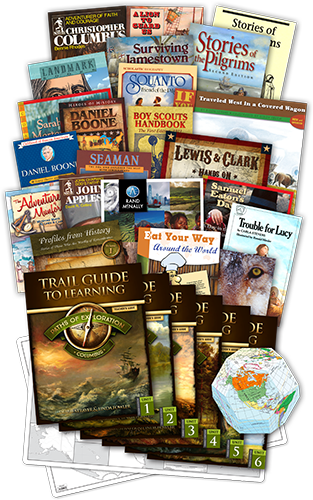When it comes to homeschooling, sometimes you need to be a little sneaky. I know it is hard to believe, but some children automatically put up a wall at the thought of sitting down to do school. Somehow they get the idea that school is the thing you get through to be able to do the fun stuff. (I’m sure we have never given them this idea!) They are reluctant learners.
But hopefully YOU realize education isn’t something done during set hours of the day, or believe it only happens when your child is sitting with paper and pen in hand.
Some of the most memorable educational activities are the ones where your children won’t even realize they are learning something.
To be a ninja homeschooling mom, all you have to do is be intentional, flexible, and creative with your reluctant learners. You will find it easy once you adapt the mindset.
I like to call this educational method stealth homeschooling.
[The following post contains affiliate links. You can read my disclosure here.]

1. Be Intentional with Your Reluctant Learners
Intentional means to do something on purpose. Being intentional requires some planning on your part, but that doesn’t necessarily mean it takes hours to do.
Think through some of your responsibilities apart from homeschooling. For example, going to the grocery store can be a great activity to learn and practice multiple skills. Here are a few simple ideas for children of multiple ages and levels:
Before going to the grocery store they can:
- Write down what is needed as you dictate it to them.
- Organize the pantry.
- Create a system your family can use to know when your run out of something.
- Collect and organize coupons.
- Look through the sales flyers (or online) to find out the specials of the week. Older students can even plan meals based on the best deals.
At the grocery store they can:
- Figure out what the best deal is on the shelf. Is the name-brand item on sale really cheaper than the generic brand? Is buying fruit prepackaged in a bag a better deal? And even if it is, will a lot be wasted because they aren’t as good as the ones you would have chosen?
- Create a map of the grocery store. Then for the next shopping trip, they can plan for how to shop the the most efficiently.
- Weigh produce and figure out how much the price will be based on the weight and price per pound. Let them check to see if they are right when you check out.
- Estimate the total before checking out and then compare the estimates to the total.
- Use a calculator to keep a running total instead of estimating.
After you get home they:
- Put up the groceries in an organized manner.
- Examine the receipt. Are there any mistake on it? If their estimate of the total was really low, show them how quickly groceries can add up!
Consider all the skills you have addressed from dictation and math to geography and critical thinking The best part: the learning connects to real-life. No more, “Why do I have to learn this?”
Obviously you wouldn’t do all of these suggestions in the same trip! But consider all the things they will learn if you did just one each time you went shopping. It is true your grocery shopping may take a bit longer, but the educational benefits will more than make up for the extra time.
2. Be Flexible with Your Reluctant Learners
When you are flexible, you can capitalize on alternative ways to reach the same goals.
For many years we used the Trail Guide to Learning series (which we LOVED). It is actually a full curriculum, except for math, based on natural learning methods such as narration, copywork and dictation, reading real books, and hand’s on science. (It’s an excellent living books based curriculum!)
But that doesn’t mean my son joyfully did every one of the assignments. When I would ask him to narrate the reading we had done, he would do it with the sigh. Don’t you just love the sigh? However, if at night I said, “Tell Dad about what we were reading today,” he would launch into a detailed description. He narrated the story without even realizing it was happening.
Ninja homeschooling mom strikes again.
We were still able to accomplish the objectives of the lesson, but by being flexible we did it in a way that my son enjoyed. I really wish I had adopted the same philosophy in math when my kids were younger. From almost the beginning both of my boys decided they didn’t like math.
At the time I thought they needed to do a math curriculum—textbook and worksheets with a few manipulatives thrown in. I can’t help but think if I hadn’t been so fearful of leaving “gaps” in their math skills, they may have actually discovered a love (or at least a like) for math.
Think of the ways math can be taught apart from textbooks and worksheets. Children can do many activities that involve math skills:
- Sort socks to find matching pairs.
- Play board games, card games, and dice games frequently.
- Cook and bake to learn and reinforce fractions.
- Put puzzles together.
- Use a hundreds chart.
- Solve tangram puzzles.
- Play with math manipulatives.
- Use real coins and bills to teach about money—Have your child count out the money to pay for an item at the store. Let them practice making change for you.
- Read living books about math concepts.
The possibilities are endless. We occasionally did some of these things, and my kids enjoyed it when we did. Overall though, I wasn’t very flexible when it came to teaching math. You can be!
3. Be Creative with Your Reluctant Learners
The Ninja Homeschooling mom’s greatest weapon may be creativity.
Some of you may have just read that and thought, “Well forget that.” The dictionary defines creative as having good imagination or original ideas. I believe everyone is creative in some way or other because we are made in the image of God, and He is certainly creative.
However, if coming up with original ideas for stealth teaching tactics isn’t your thing, no problem. Creative ideas don’t have to be your ideas. Many people generously share activities and lessons on blogs, websites, and in local homeschooling groups. Use them!
Remember, too, that creativity can simply be taking an idea and applying it in a new way. While doing the Keen Observation exercise from The Writer’s Jungle, my son was describing an object, he was instructed to get a box of crayons out and find the color that matched the object. He had chosen a bright orange dinosaur. Did you know there is a “Macaroni and Cheese” crayon in a Crayola box? Everyone knows exactly what that orange looks like. (Seriously, really look at the names of crayons!)
Based on that exercise I made up a game to play in the car. As we would drive around I asked them to name the colors they saw as if they were crayon names. One of my sons once saw a cream colored suburban and yelled out “Melted Mozzarella Cheese Cream!” Not sure if Ford will ever use it, but I like it.
Be a Homeschooling Ninja for your Reluctant Learners
Education happens all the time. Be intentional about finding opportunities to teach your kids without ever calling it school. Plan, but be flexible, so you can capitalize on the little moments and the big ones too. And remember, a little creativity produces some great results.
Your reluctant learners will never know what hit them.




I LOVE this! As soon as I read the title, I had to figure out what in the world a Ninja Homeschooling mom looked like. After reading this post, I know exactly what she looks like…because I see her every day in the mirror. 🙂
Thank you for some great reminders and fun, new ideas I can implement in my own homeschool…ninja style of course.
Thank you Jennifer. Ha! Yes we Ninjas are all over the place. Just don’t tell the kids.
Ooh! Ninja! I like that! LOL! Great suggestions!
Perfect timing. My third grader and I have been butting heads since starting back to school. This reminded me that he doesn’t have to know we are doing school to learn. Thanks I needed this
You are welcome! I wish I could say my kids were always eager to learn, but nope. They were normal boys 😉
I always try and use errands as learning lessons without Charlie knowing what I am doing. As it keeps the eye rolls to a minimum.
Ha! That’s great 🙂
“Some of the most memorable educational activities are the ones where your children won’t even realize they are learning something.” Absolutely!
And you are the BEST at this! Y’all need to check out Susan’s fun ideas on susanevans.org!
Such a great read. I definitely can relate to this and already started to implement the things you mentioned; so thank you for sharing and encouraging. I’m glad we aren’t alone.
Thanks so much 🙂